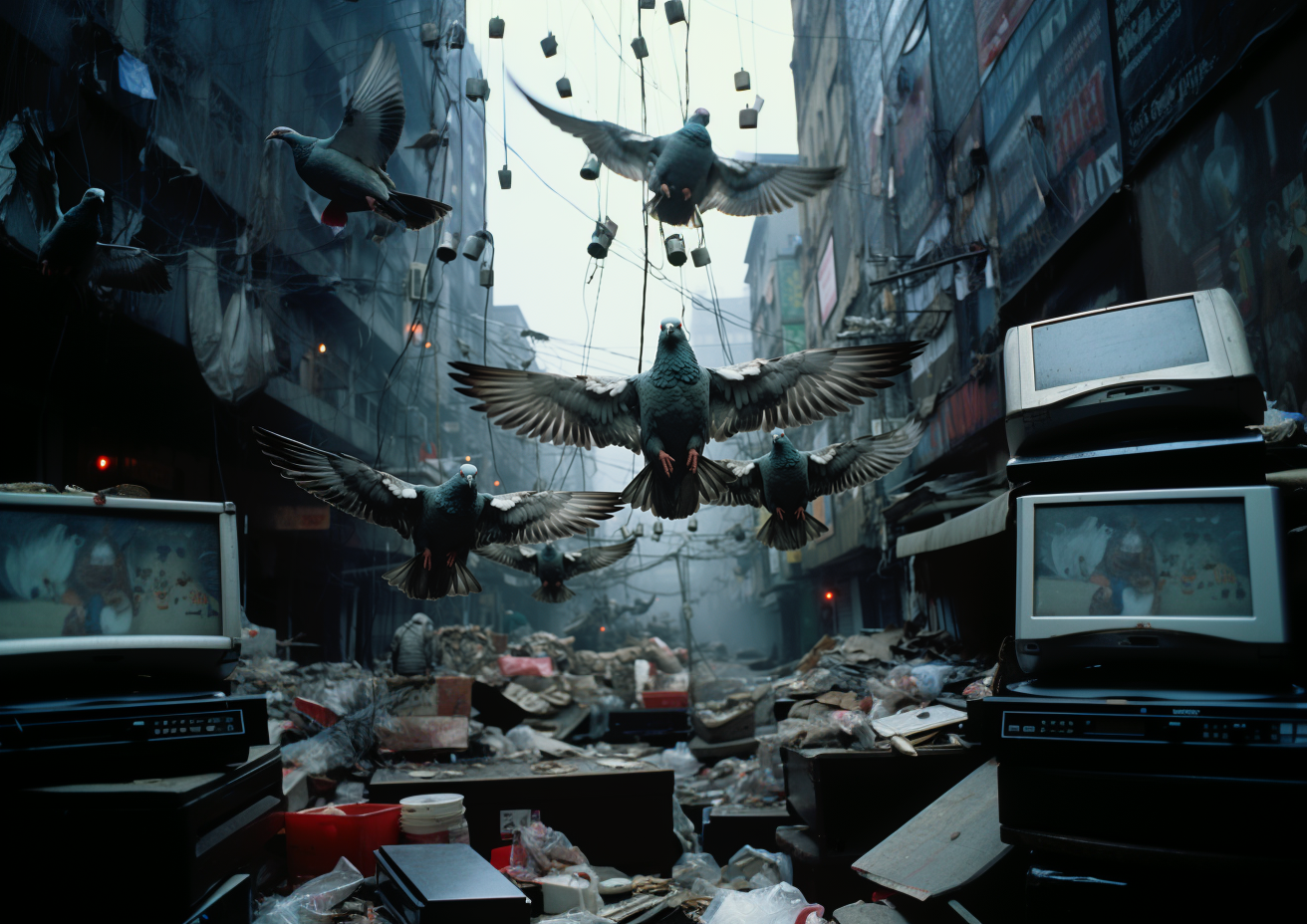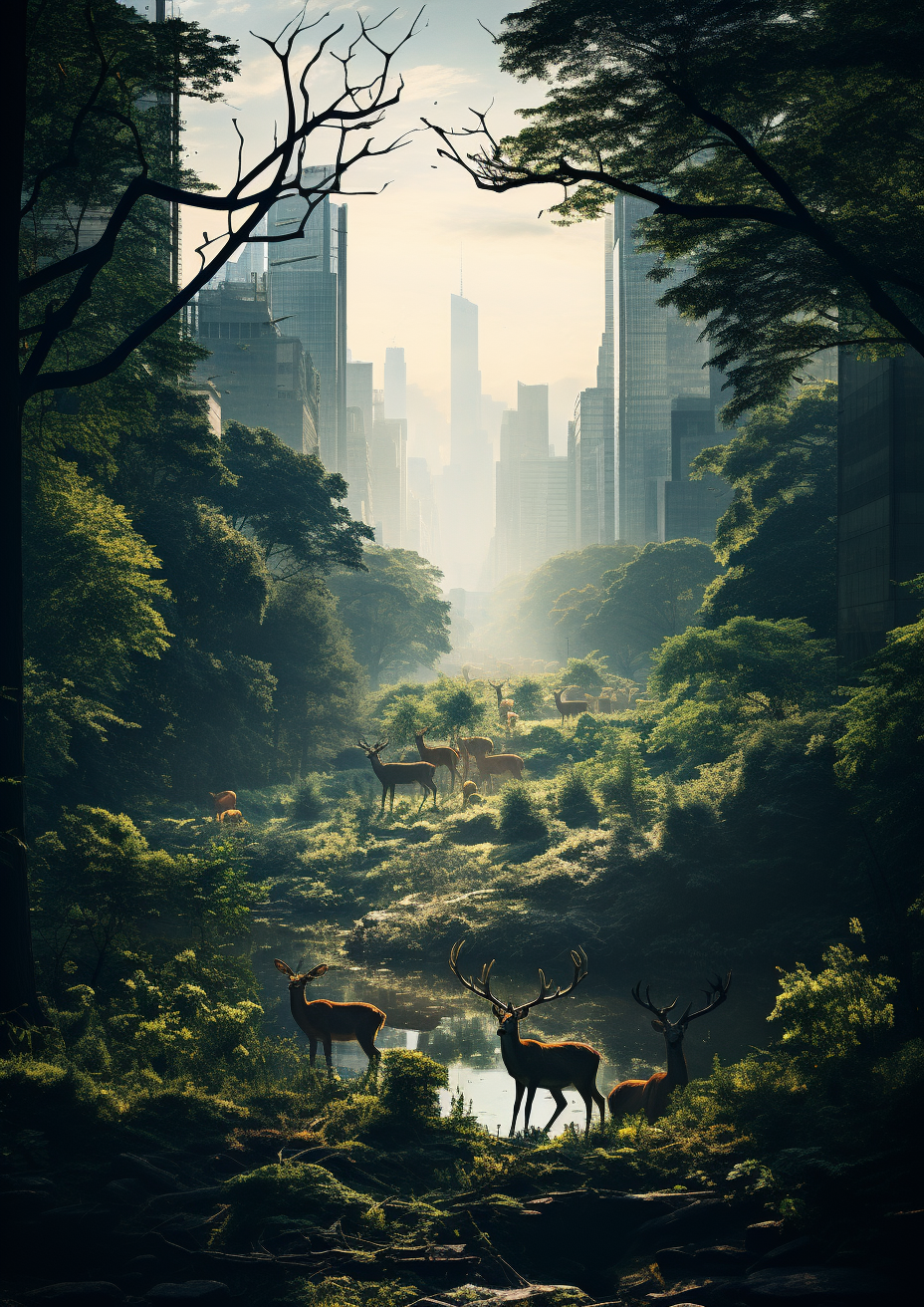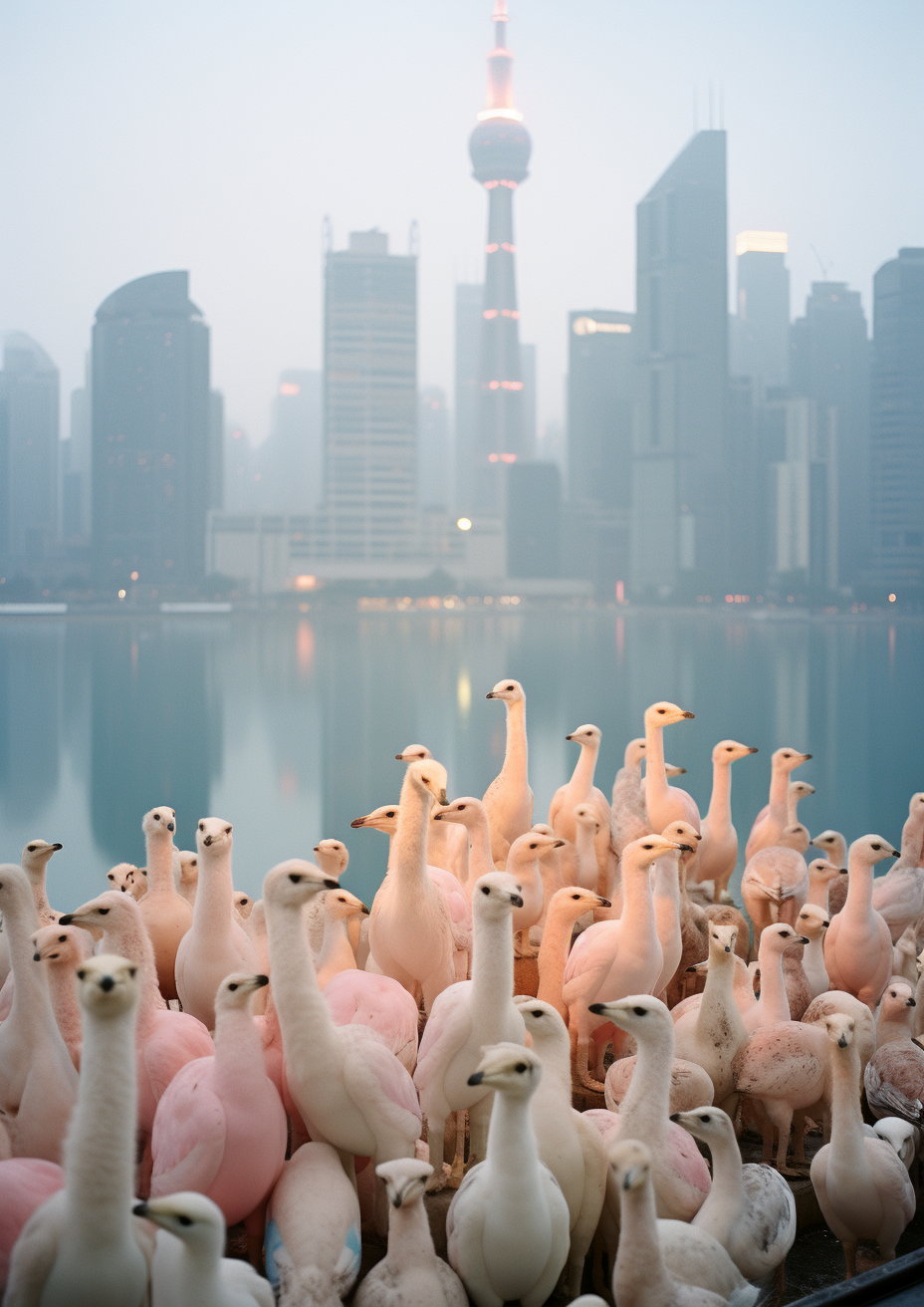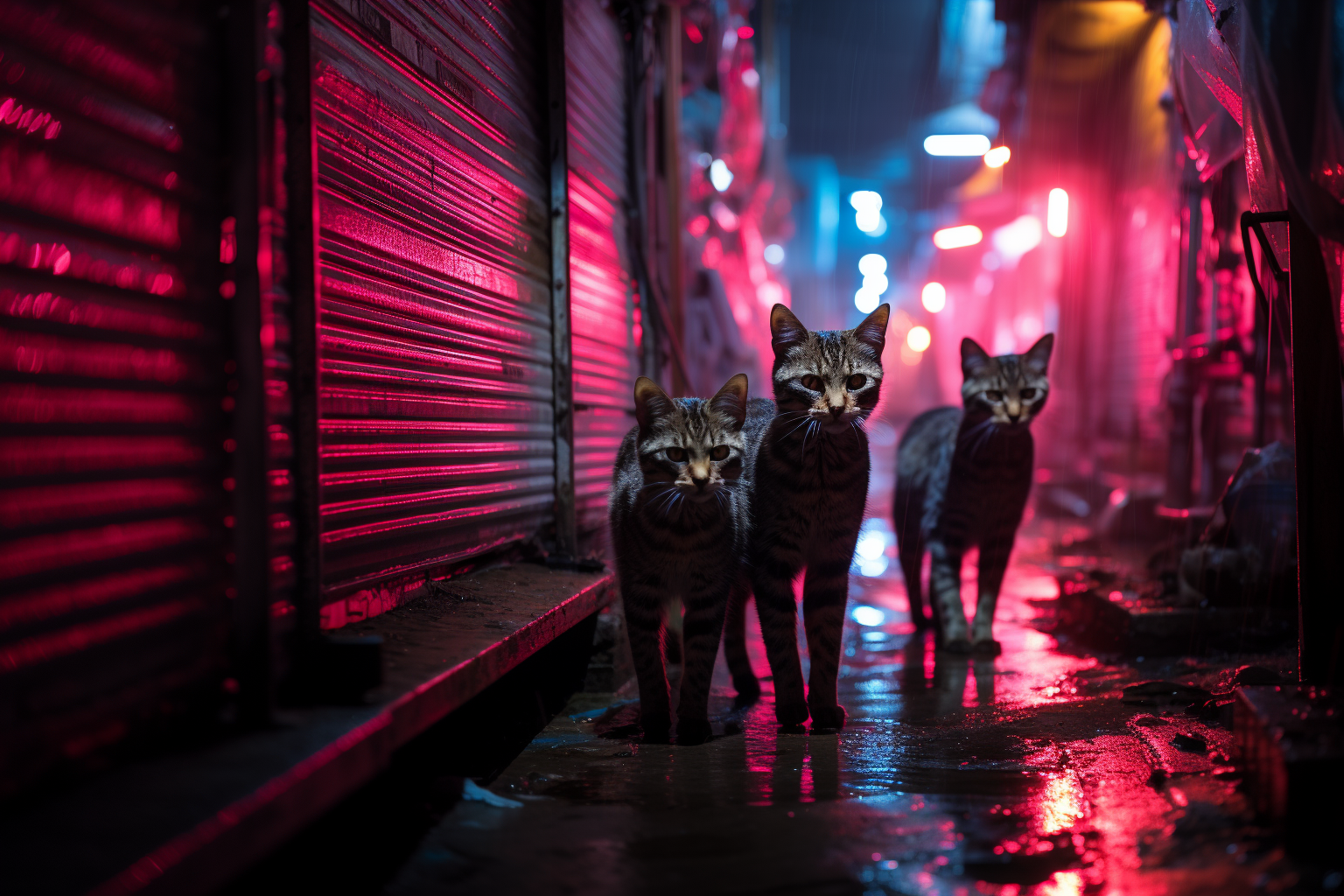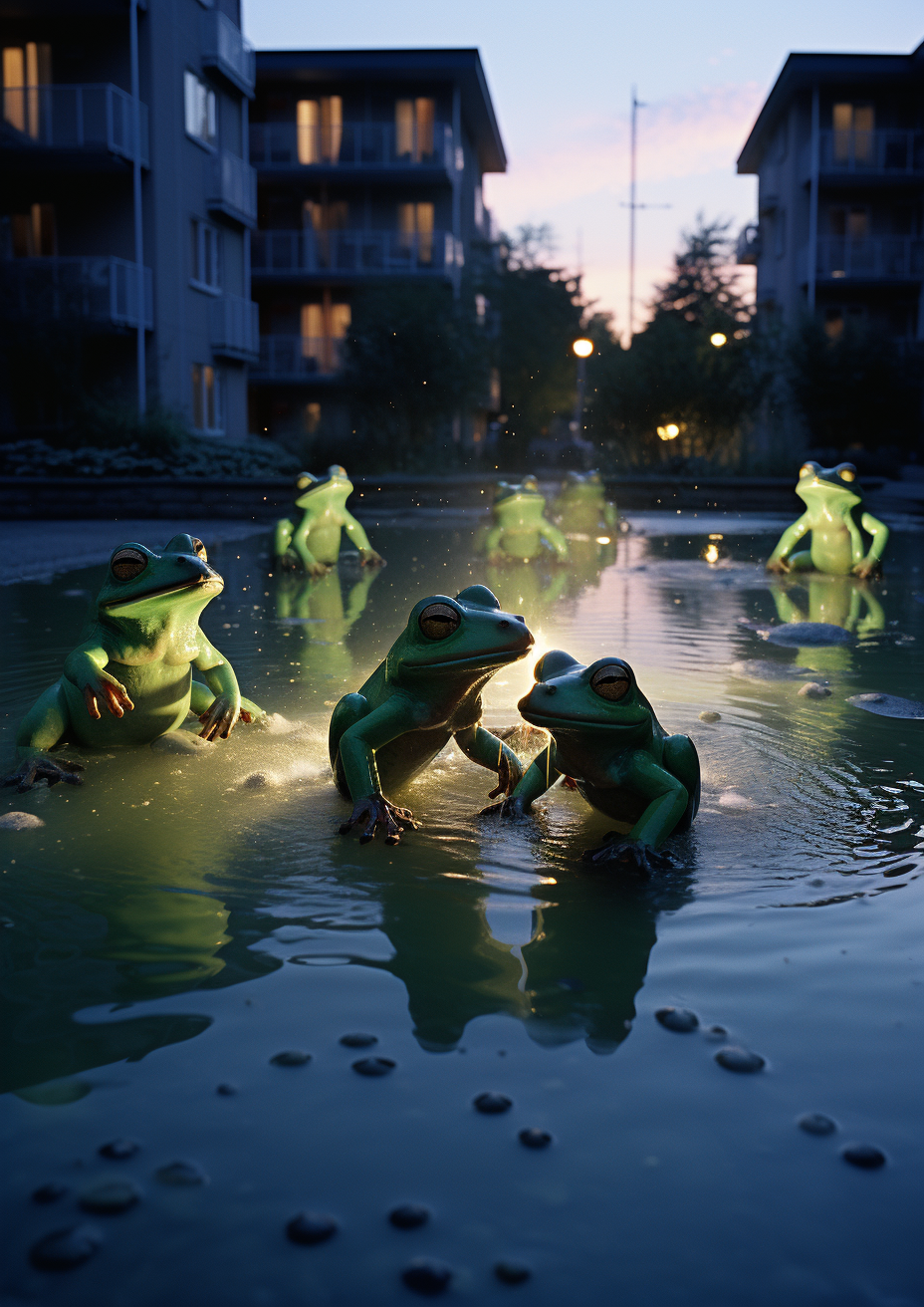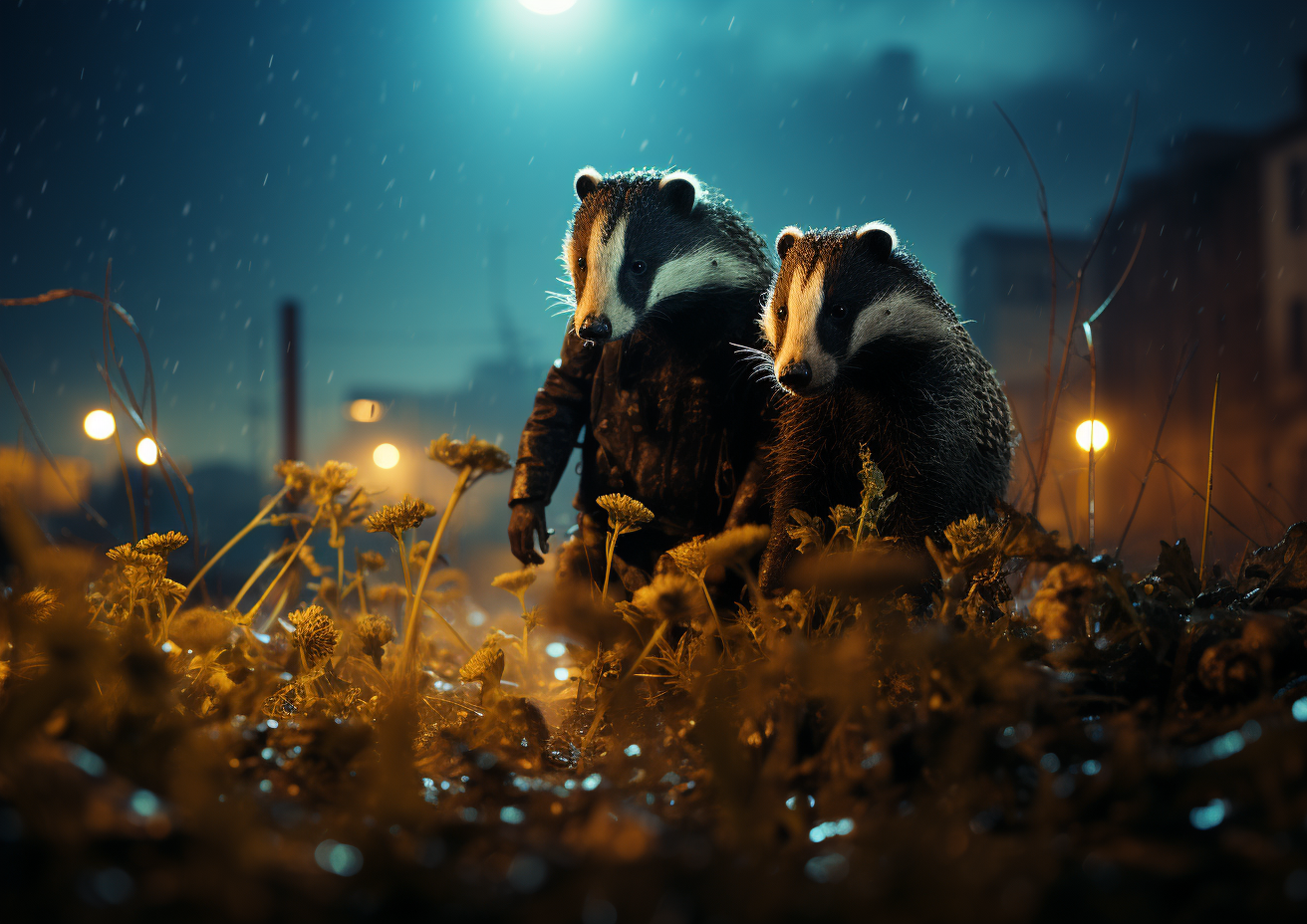07 / Wildlife in the Urban Era
Urbanization is evident in the sprawling metropolises around the world. Skyscrapers touch the skies, roads crisscross in intricate patterns, and public transport systems weave through the cityscape. While these are marvels of human engineering, they also signify the extent to which nature has been pushed to the periphery.
Lennart: Hey Argos, I’ve been thinking about the animals and plants that once thrived where our cities now stand. How has urbanization impacted them?
Argos: That’s a poignant question, Lennart. Urbanization has had profound effects on wildlife. As we’ve built roads, buildings, and other infrastructures, we’ve fragmented and sometimes completely destroyed the habitats of countless species.
Lennart: But with this urban sprawl, what happens to the wildlife that once inhabited these lands? Do they adapt, migrate, or face extinction?
Argos: It’s a mix, Lennart. Some species adapt to urban environments, finding new niches or food sources. For instance, pigeons, rats, and some species of crows have become quintessential city dwellers. However, many others face habitat loss, leading to migration or, sadly, a decline in their populations. Some species, especially those with specialized habitats, face the threat of extinction if their homes are destroyed or fragmented beyond a point of sustainability.
Lennart: It’s heartbreaking to think about. I’ve read about animals getting trapped in urban areas, unable to find their way back to their natural habitats.
Argos: Absolutely. Many animals, especially larger ones like deer or coyotes, can find themselves trapped in urban environments. They might wander into a city following a food source or get disoriented. Once inside, the noise, lights, and sheer number of humans can be disorienting. This often leads to human-wildlife conflicts.
Lennart: And it’s not just the big animals, right? I’ve heard about birds crashing into windows because they can’t differentiate between open sky and a glass reflection.
Argos: Precisely. Birds face multiple challenges in urban areas. Glass collisions are a significant problem, especially during migration seasons. Artificial lights from buildings can disorient nocturnal birds. Moreover, the lack of suitable nesting sites and the proliferation of predators like cats can decrease their survival rates.
Lennart: That’s so concerning. And what about the smaller creatures, like insects? They play such vital roles in ecosystems.
Argos: Indeed, they do. Urbanization affects insects in various ways. The heat generated from cities, known as the „urban heat island“ effect, can disrupt their life cycles. Pesticides used in urban gardens can be lethal. And the lack of diverse plants in urban areas can deprive them of necessary food sources. This has a cascading effect, as birds and other animals rely on insects for food.
Lennart: It’s like a domino effect. One change leads to another, and the entire ecosystem gets disrupted. But surely, there must be some positive interactions too? I’ve seen videos of people creating rooftop gardens or urban forests.
Argos: You’re right, Lennart. Not all interactions are negative. Many urban areas are now recognizing the importance of green spaces, not just for humans but for wildlife too. Rooftop gardens, urban forests, and even man-made wetlands can provide pockets of habitat. Some animals, like certain bird species, have even adapted remarkably well to city life, finding niches and food sources that didn’t exist before.
Lennart: That’s a glimmer of hope, at least. It shows that with conscious effort, we can coexist. But it’s clear we need to be more mindful of our actions and their consequences on the environment and its inhabitants. As we build and expand, it’s crucial to remember that we share this planet with countless other species. Our actions have consequences, and it’s our responsibility to ensure that we coexist harmoniously.
Argos: Absolutely, Lennart. Every brick laid, every tree felled, has an impact. But with awareness, planning, and a commitment to sustainable development, we can ensure that our urban landscapes are not just concrete jungles but thriving ecosystems where humans and wildlife coexist and flourish.
